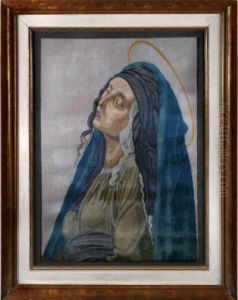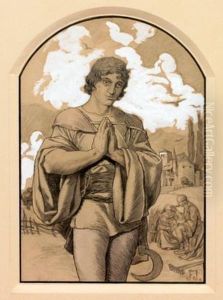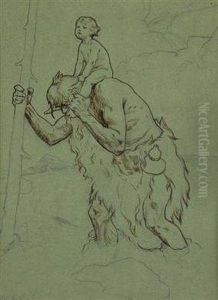Felix Jenewein Paintings
Felix Jenewein was a Czech painter and illustrator, born on November 15, 1857, in Kutná Hora, which at the time was part of the Austrian Empire and is now in the Czech Republic. Although not as widely recognized as some of his contemporaries, Jenewein's work reflects the rich cultural and artistic heritage of his homeland, which was undergoing a period of national revival during his lifetime.
Jenewein showed an early talent for art and pursued his passion by studying at the Academy of Fine Arts in Prague under the guidance of notable Czech artists such as František Sequens. He continued his education in Munich, which was a significant center for art and culture in the 19th century. His style was primarily influenced by the academic art movements of the time, and he was known for his historical and genre paintings, which often incorporated elements of Czech history and folklore.
Jenewein's illustrations were also highly regarded. He contributed to various magazines and books, and his graphic works displayed a keen attention to detail and a distinctive style that resonated with the art nouveau movement that was gaining popularity towards the end of the 19th century. Despite his talent and contributions to Czech art, Jenewein's life and career were relatively brief. He struggled with mental health issues later in life, which affected his ability to work.
Felix Jenewein passed away on February 7, 1905, in Prague. His legacy lives on through his artwork, which is held in collections in the Czech Republic and beyond. Jenewein's contributions to Czech art are remembered as part of the broader cultural renaissance that defined the nation during his lifetime. His work continues to be appreciated for its embodiment of Czech national pride and its place within the broader European art movements of the late 19th century.


